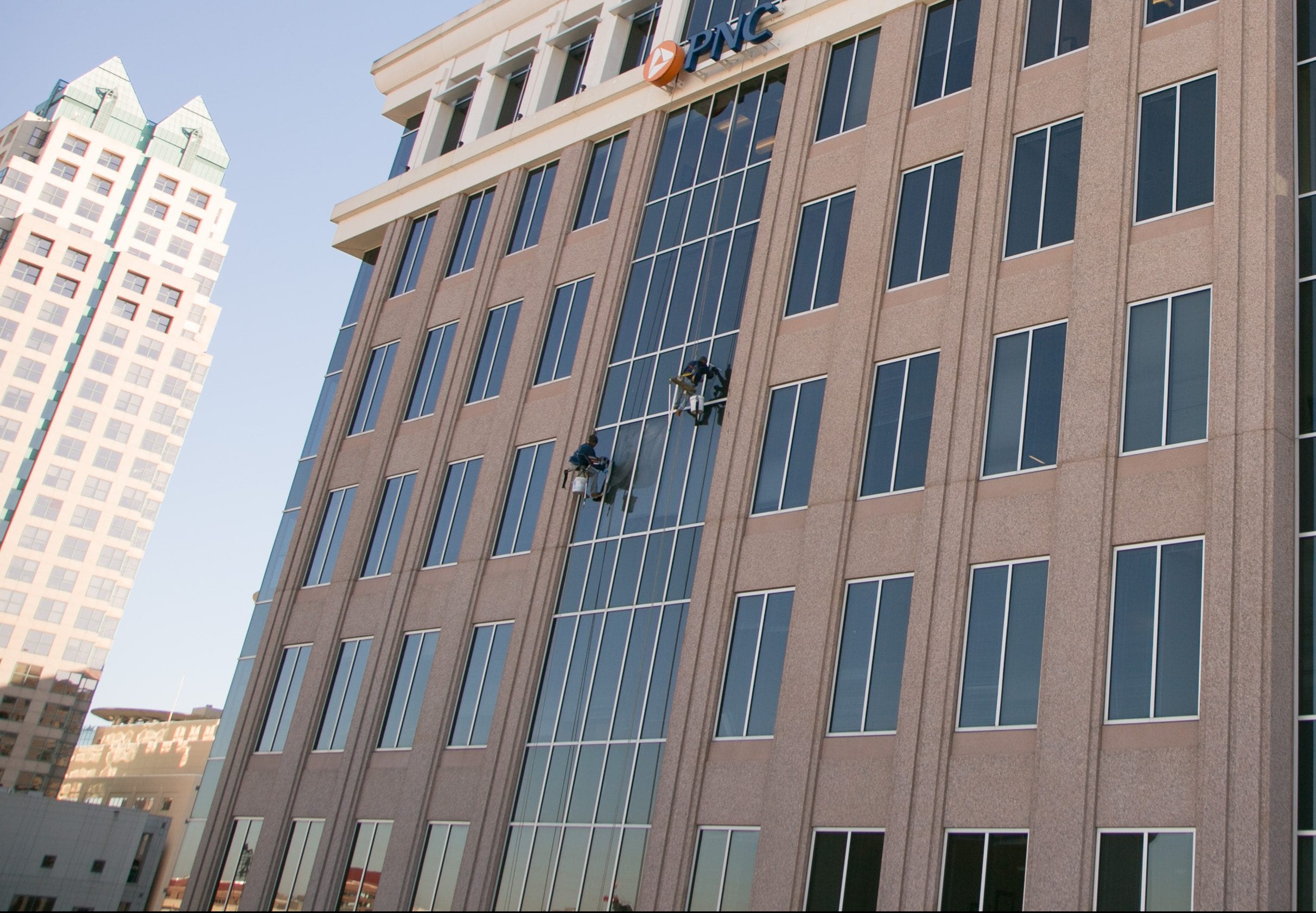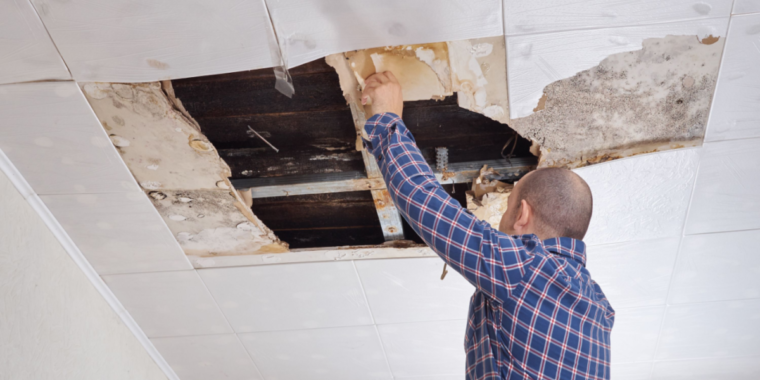Facility managers play a vital role in building emergency maintenance service management. Facilities managers are the control point for all maintenance, restoration, and repair concerns, including emergency maintenance. Therefore, they must be able to communicate and allocate resources effectively and as quickly as possible during building maintenance emergency scenarios.
Emergency maintenance services include critical elevator cab concerns, water leaks, flooding concerns, and safety features. With preparation and professionalism, facility managers can handle emergency repairs swiftly without affecting the business flow and its occupants.
As the facilities management industry continues to grow, facility managers’ jobs are expanding to include more duties and skill sets, including emergency maintenance service. In addition, the physical environment of buildings is becoming more crucial to how modern society conducts business, enjoys entertainment, and enjoys lifestyles leading to increased facilities management budgets, which means managers have a more significant influence. But first, it’s essential to understand what urgent maintenance truly is and how it differs from standard maintenance.
What Constitutes a Maintenance Emergency?
How often do you think about the answer to, “what is emergency maintenance?” Emergency maintenance is a repair that occurs on an as-needed basis and requires immediate attention. An emergency repair must be made immediately when a piece of machinery or the structural integrity is in jeopardy, causing an emergency maintenance concern. Emergency repairs can happen at any moment and need a fast response as they could pose a danger or safety hazard to building occupants and staff. Some building maintenance emergency circumstances can cause a complete shutdown or even an evacuation, which can cause a loss of product and profit for business owners while also affecting the safety and health of patrons. Therefore, the longevity of the building is dependent upon prompt and effective responses to emergency maintenance and emergency maintenance service.
After-hours emergency maintenance and facilities management is an undisputed necessity for building owners. Fortune Business Insights states that “the global facility management market is projected to grow from $1,260.36 billion in 2022 to $1,856.44 billion by 2029, at a CAGR of 5.7% in the forecast period…The global facility management market is projected to grow from $1,260.36 billion in 2022 to $1,856.44 billion by 2029, at a CAGR of 5.7% in the forecast period”.
When unanticipated emergency maintenance occurs in a building, a reliable professional must repair it swiftly and affordably. However, most contractors are neither prepared nor created to tackle all the emergency maintenance demands during a building maintenance emergency. Seek a professional with an entire staff that assists building owners and property managers with critical and urgent emergency repairs.
Work with industry leaders that create and implement proactive and preventative maintenance that will inevitably increase building value by keeping it in tip-top shape. Implementing planned maintenance will help prevent future fixes, problems, and emergency maintenance. Below are upkeep practices and maintenance tips to remember to reduce the cost and frequency of emergency repairs and maintenance needs:
1. Address Issues When First Detected to Ensure Timely Response and to Reduce Further Risks
Routine and emergency maintenance issues can be detrimental if not addressed promptly. Putting off minor leaks, commercial glass restoration, loose floor tiles, and other repairs can be tempting. Still, these minor issues can quickly grow, leading to emergency repairs and even safety issues when ignored.
Repairs should be dealt with as soon as possible before they become emergency repairs and become more severe by producing additional risks to the building and its occupants. For example, a leaking outdoor faucet does not seem like a deal. Still, suppose a water leak is ignored for a long time or goes undetected. In that case, it will cause after-hours emergency maintenance, incurring extensive damage and costing thousands of dollars in lost revenue. Response time is vital. A safe and effective maintenance plan must be adequate to lower risk and maintain satisfaction. Using qualified and after-hours emergency maintenance specialists available around the clock for emergency repairs is a game-changer for facility management.
2. Define What Constitutes an Emergency and Who to Contact.
What is a maintenance emergency? Who is in charge of an emergency maintenance situation? Facility management teams should answer these questions and implement a plan. Ensure all parties in an authoritative position know what plan to implement, what constitutes an emergency maintenance concern, who to contact, and the difference between emergency repairs and routine maintenance.
Choose the appropriate leaders for after-hours emergency maintenance situations. Defined roles enable decisive and quick-thinking action. Share your emergency plan with others. Inform those in positions of authority and those with specific duties. Make the simplest, most straightforward after-hours emergency maintenance plan available to staff.
What is a maintenance emergency? In a June 2022 event in Wicker Park, Illinois, part of a building’s facade fell on a woman after authorities warned the owner to make repairs weeks earlier. According to CBSNews.com, The Department of Buildings contacted the building owner and told them to ”immediately put up a heavy-duty canopy on the public way around the front of the buildings, get a licensed structural engineer to assess the building façade, [and], get a licensed masonry contractor to make emergency repairs.” Also, the same article states, “While the heavy-duty canopy was put in place, the owner did not make any repairs.”
While this building owner may not have viewed this as an emergency maintenance issue, it resulted in the critical injury of an innocent passerby due to the delay in response to this after-hours emergency maintenance.
3. Weigh Options and Determine the Best Course of Action
Consider all available options when an emergency maintenance issue arises. Look at the best opportunity to reduce the impact of the emergency repair on other components and implement the best course of action and next step to address the situation.
A clearly defined plan, operating procedures, and proactive checklist will help ensure after-hours emergency maintenance have as few hiccups as possible, allowing business to proceed as usual and as quickly as possible.
4. Have a Team of On-Call Field Service Vendors Ready for Urgent or Emergency Maintenance.
An emergency maintenance service provider guarantees that emergency repairs are met with professionalism and competence. Facilities managers can handle the demanding nature of their work while cross-identifying problems, responding fast, and resolving emergency maintenance as soon as possible by accessing their network of on-call vendors available for emergency maintenance.
According to Landport X1, “the 3 AM wake-up call is often a reality for facility managers. Only 6% of companies have a well-established maintenance department. Yet maintenance issues threaten the very existence of a business.” An expert emergency maintenance partner has a network of contacts that assists with immediate and on-demand emergency repairs.
An emergency maintenance service provider with a well-established network can contact multiple resources if one is not readily available. A partner for commercial building maintenance takes the pressure off the building and business owners, allowing them to concentrate on business-oriented tasks.
If a network of after-hours emergency maintenance vendors is not available, a Plan B must be implemented. Planning and preparing as much as possible is vital. Have a list of preferred vendors to contact when an emergency repair arises. Ensure that a dedicated team is assigned ahead of time in charge of a building maintenance emergency.
5. Check Prior Emergency Routes and Evacuations and Follow Predetermined Plans as Necessary
For the health and safety of patrons, occupants, and staff, ensure that all evacuation plans are posted in the required spots in an emergency maintenance situation. When immediate action is needed, develop and implement an emergency plan, including emergency repairs and hazard and safety precautions that need to be considered. The strategy should consider immediate structure deterioration, chemicals, fire, and flood emergencies. Ensure that all staff is aware of the evacuation routes and up to date on new regulations and changes made to emergency maintenance service needs of the building.
6. Ensure All Field Service Vendors Have Proper Training
Vendors, team members, and other personnel must know their job and responsibilities in the event of an emergency maintenance issue. They must be fully trained in carrying out those duties, including updating processes and procedures if necessary and knowing when to provide emergency maintenance services. All should also abide by all safety-related rules and regulations.
All reputable organizations that provide building maintenance emergency and routine building maintenance services are highly qualified and hold the appropriate licenses for emergency maintenance services. Having written safety policies is highly important and must be effectively conveyed to all personnel, team members, and vendors involved in the facility. Each person has a role and needs to be trained in their specific duties and expectations.
7. Only Make Emergency Repairs According to Code and Engineering Specifications
Never take shortcuts or veer from regulated codes, standards, or procedures to save time or money. Faster and easier do not equal safer and more accurate. Shortcuts are great for driving but not for emergency maintenance services. Only qualified personnel should do emergency repairs and follow all building and safety requirements.
In 2021, it was estimated that 42.5 percent of commercial businesses spent between 21 and 40 percent of their operating budget on cleaning and maintenance equipment, personnel, and supplies, according to Statista. Therefore, prioritizing a facility’s upkeep and emergency maintenance service is vital to its longevity, functionality, and prevention of emergency maintenance.
9. Keep Your Window Accesses and High-Rise Platforms in Tip-Top Shape
A building’s plaza deck systems, rooftop doors, windows, window cleaning scaffolding, fire escapes, and other emergency equipment must be frequently examined to ensure they are safe, undamaged, and still in compliance with the law.
Depending on the type of building and its location, its cleaning and emergency maintenance service needs vary. For example, if the building has frequent foot traffic and faces a busy street, the need for window and platform cleaning is much higher than that of a building used for storage and facing a parking lot. Pollution and birds can also play a significant role in the frequency of cleaning. Bird proofing and deterrents in commercial buildings are necessary preventative measures that building owners can implement to reduce the cleaning frequency and emergency repairs.
10. Coordinate Scheduled Maintenance and Repair Services to Reduce Risk of Emergencies
The final way to reduce expenses related to emergency repairs of commercial buildings is to coordinate and schedule routine checks and emergency maintenance services and stick to the emergency maintenance service schedule.
Taking advantage of the technologies offered to facility managers is a proven game-changer for proactive and emergency maintenance management. According to FortuneBusinessInsights.com, “Computer-Aided Facility Management (CAFM) software tools streamline management and control of facility management maintenance operations. It comprises a variety of tools, including CAFM space applications, software, and systems.
Large organizations widely adopt CAFM solutions to design, observe, and execute their facility management tasks precisely. It combines administration, architecture, engineering concepts, and behavioral science to optimize business functions.” These capabilities make it easier to coordinate maintenance, both planned and emergency or urgent needs, in tandem, allowing facilities managers to stay strategic and avoid the pitfalls of missing one or the other.
11. Stay Informed of Emergencies Beyond Your Control, Such as Weather-Related Events
Staying informed and educated on natural disasters and weather-related emergencies is fundamental for emergency repairs and situations. Mother nature is unpredictable, and an event can happen anytime. Preparing an emergency maintenance service plan is the only way to ensure the health and safety of the building, its guests, and personnel.
Given that there are only so many ways to prevent weather-related emergencies and natural disasters, it is crucial to be as informed and proactive as possible. It is essential to monitor the situation closely and have a weather-related emergency maintenance service plan for emergencies like fires or gas leaks.
12. Retrain Your In-House Building Management Team on How to Respond to Emergencies
An emergency maintenance plan is only as effective as the staff implementing it. Providing up-to-date information is vital to ensure staff and personnel are able and ready to implement an emergency maintenance service plan when an emergency occurs. Through education and training, all employees are to be made aware of potential risks and the actions needed to ensure the safety of the building and its occupants.
Performing routine drills and practices is a simple way to keep plans fresh in employees’ minds. Use various types of scenarios and techniques that can occur. Training must include communication, an emergency maintenance service plan, designated roles, warnings and alarms, evacuation, shutting down of necessary equipment, and sheltering.
13. Leverage Building Management Software & Partnerships While Also Tracking Lessons Learned From Urgent or Emergent Situations
An ounce of prevention is worth a pound of cure; the same goes for building maintenance, emergency management, and planning. Facility managers can learn from previous problems and emergency circumstances. This enables them to be better prepared for an emergency maintenance issue. As teams use scheduling software and cutting-edge technology, update monitoring and security systems, and collaborate with industry experts, they can avoid problems while learning what happened and why.
Further, working with Industry partners that specialize and are trained in emergency maintenance service and preparedness reduces risk. Essentially, this level of outsourcing takes the brunt of the building owner’s responsibility and allows them to focus on maintaining business as usual.
Stay on Top of Commercial Building Maintenance and Reduce Emergency Repair Costs by Partnering With Valcourt Today
Emergency maintenance is unpredictable and inevitable. Keeping staff trained and updated, maintaining an on-call vendor list, addressing issues immediately, and staying proactive are critical ingredients in the urgent facility management recipe.
Reduce the risk and costs by partnering with a thoroughly trained and established partner in the field of emergency repairs. Staying prepared and on top of all proactive and preventative emergency maintenance service plans can be overwhelming and costly. Streamlining the process through a pro is the way to go. So stay on top of building maintenance, reduce building maintenance emergencies, and contact The A1orange Group today!






